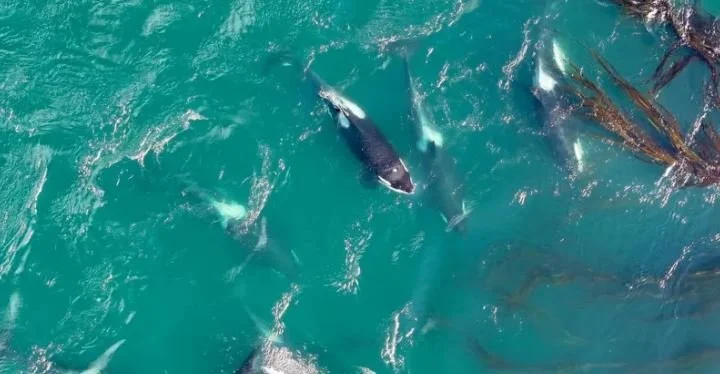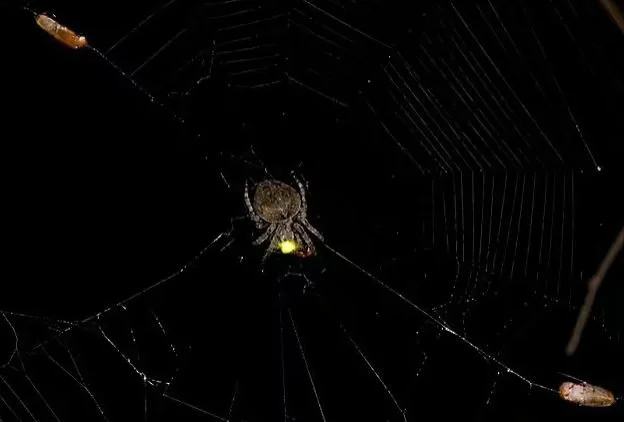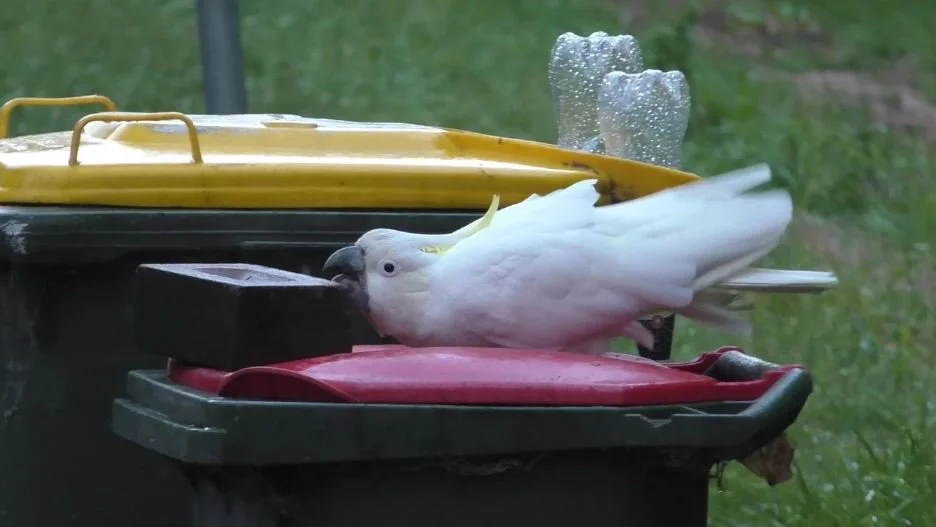All tagged CurrentBiology
Marine biologists in the north Pacific have observed orcas taking the killer whale version of a spa day: using kelp to massage each other. The behavior, which involves fashioning a tubular piece of seaweed and using it for a planned purpose, marks the first time a marine animal has been seen using tools.
Wild chimpanzees drum with rhythm, according to a new study by primatologists from the University of St Andrews. Not only that, chimps from either side of Africa have their own distinct beats.
Spider-gazing researchers in China say that the orb-weaving spider (Araneus ventricosus) entices male fireflies into its web, then it gets freaky. Somehow the spider manipulates its prey into mimicking a female firefly’s flashing light, which lures more amorous males into the deathtrap.
Because the spider called daddy longlegs has a particularly salient trait – namely its long legs – biologists never really considered the creature’s eyes, which were assumed to be a standard-issue pair situated at the top of the head. Now researchers have discovered two more sets of peepers, vestigial and useless, on the side.
Molecular biologists have discovered that thousands of air-quality monitoring stations around the world have been recording more than just air pollution and dust, they are also collecting biodiversity data. Their findings are published in Current Biology.
A deep-ocean survey in the Pacific has revealed about 5,000 previously unknown species, but all of them are about to be disturbed – at least – by several mining projects under review for the area.
The long-running war over garbage in Southern Sydney in NSW, Australia has evolved into a battle of wits. On one side are the humans, who want to keep their street-side rubbish bins sealed until the garbage trucks arrive; on the other side are the cockatoos, who want the opposite.
Japanese researchers have observed a phenomenon that we thought was impossible: a nonhuman animal crying tears of joy. A new study reported in Current Biology this week demonstrated that our canine friends will well up with tears under certain circumstances, and it probably happens more often than we think.
When an octopus mom’s eggs are close to hatching, she will start acting a little bit nuts. She may stop eating, tear at her own flesh, beat herself against a rock; and if she does eat, the meal might be pieces of her own arms. The gruesome self-flagellation continues until death.










